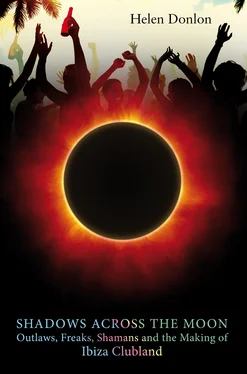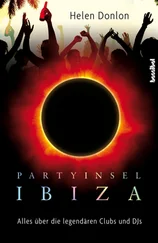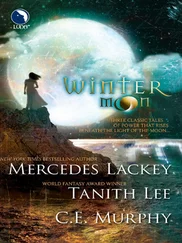The Roman general Scipio came by in 217 BC, and he looted the island for three days, before sailing off with the spoils. When Carthage fell in 146 BC, Ibiza had a period of independence, before falling under full Roman suzerainty, and for roughly the next two hundred years, the island had a shared Roman/Carthaginian identity, which included a growing bilingualism. The island’s currency now bore Roman figures on one side, and Carthaginian gods Bes and Eshmum remained on the other side. The Romans, who introduced slave labour as well as setting up olive presses and fish farms, eventually came to accept the island’s love of Bes, and talismans bearing his likeness were soon being created.
Gradually though, all other traces of the Punic era were wiped out: Ybšm was renamed Ebusus, and Eshmun’s temple in Dalt Vila was now to be dedicated to Mercury, the great god of commerce. It was Ibiza’s first temple of Mammon. As if on cue, things now took a turn for the worse. The Romans distractedly slipped away to concentrate on developing North Africa, taking the slaves with them. For the next half millennium not much evolved on the island, although the disruptive Vandals arrived for an 80 year stay in 455 AD. Then the Byzantines conquered Carthage in 533, before also taking control of the Balearics in 535.
Other tribes who have come, seen, conquered…and danced include the Moors, the Catalans, and large gangs of North African pirates. The Moors resuscitated island life when they took calm control in the 10th century. Renaming Ebusus Yebisah, they brought in the Arabic language, and Islam.
It is probable that the greatest influences on traditional Ibicenco music come from the Moors. The vocal style is haunting and often melancholic. Despite centuries of Christianity and multiple outside influences it is still possible to witness traditional performances out in the countryside on village fiesta days, sometimes with a female balladeer whose back will be turned to the audience as she incants some tragic tale. Men create and perform on wind and percussion instruments, including drums, flutes and castanets, and the traditional costumes usually worn are elaborate and beautifully crafted, a skill that is still lovingly passed down from one generation to the next.
And here Bes comes back into the picture again. Bes is strikingly similar to the Greek goat-god Pan or his North African equivalent, the Moroccan Bou Jeloud, and has even been linked by historians to the Christian Satan. It’s worth taking a short diversion here, simply to illustrate some close similarities between traditional music rituals in North Africa and the latter day outdoor trance party scene in rural locations in Ibiza.
To this day Sufi trance rites are still performed annually in the village of Joujouka in Morocco’s Rif mountains, in a celebration that resembles the Roman Lupercalia or Pan Rites. For centuries these traditions had disappeared into obscurity until interest in the rites was regenerated in the West by British artist, writer and sometime Moroccan resident Brion Gysin. In the Moroccan rites, villagers gather to put on elaborate trance rituals in an attempt to summon Bou Jeloud (the Pan/Bes figure), accompanied by the Master Musicians of Joujouka. This is a group of Berber Sufi trance musicians who, despite performing centuries-old traditional rhythms, have famously collaborated with latter-day western artists such as Brian Jones of the Rolling Stones, free jazz composer Ornette Coleman and singer Robert Plant.
According to legend, Bou Jeloud had made a Faustian pact with a young shepherd by the name of Attar. He would teach him the secrets of music if Attar promised he would keep the secrets safe. If he did, Bou Jeloud’s own reward for this gift of music would be to take his choice of bride from the village. Attar failed to keep the secret however, and as a consequence Bou Jeloud was offered Aïsha Kandisha – a goddess who resembled Astarte, and in some ways Tanit, who is claimed to have danced him to exhaustion, driving him insane and hence away from the village all alone, leaving the villagers to a bounteous harvest. This ritual event is still re-enacted annually in an ecstatic trance dance ritual that symbolises a blessing for the coming harvest, while the Joujouka musicians perform their accompanying soundtrack to the rites.
British artist and exile Genesis P-Orridge called the Joujouka music “as profound and spiralling as DNA. This is the raw genetic material of all sacred music.” Timothy Leary said, “Here is religious intoxication which pre-dates the Vedic soma-psychedelic scholars, ten thousand generations older than Buddha and Christ. Oldest blood-seed ritual. Fierce, unstoppable unity dance of life, ancient, pre-human mutational congregation, fertility worship, source of totem, shameful seed of evolution.” In the 1950s, The Master Musicians would perform to an international crowd in Brion Gysin’s 1001 Nights café in the International Zone in Tangier, the area known as the Interzone in William Burroughs’ work. "We need more diabolic music everywhere" Burroughs himself declared after hearing them. Timothy Leary proclaimed the Master Musicians to be "a 4,000-year-old rock ’n' roll band”.
The intrinsic value of the Bou Jeloud rites is to create a healing trance setting. That healing element of trance rituals still continues on in Ibiza through a combined lineage descended partly from the Moors, and partly via the ‘freaks’ who started making their way from Europe and the US to Goa, the Portuguese fishing colony on the coast of India, back in the 1960s. By the 1990s, that Goa freak community had expanded, taking in new generations who pioneered the modern electronic version of psychedelic trance party culture.
Today, there is a whole community who have grown up on the Goa-Ibiza trail. Their Ibiza rituals are less about pipes and flutes, as they were with the Moors, since the drum is now more usually the basic instrument for outdoor parties on the island. Tribal drumming at sunset can still be witnessed, for example, on Sundays at Benirràs (itself an Arabic name given by the Moors), a beach on Ibiza’s northern coast, and is another example of this kind of outdoor ritual. The psychedelic trance parties in remoter parts of the island is yet another.
Drummers at Benirràs gather from all corners of Ibiza and perform together in a climax of rhythm as the sun sets. It’s not unusual for small groups of drummers to appear in the island’s bars and superclubs from time to time as well. However in very recent years, i.e. since about 2008, the presence of drumming communities has started to be less prevalent on the island, as times have changed and the hippie community which celebrated the ancient traditions has begun for the first time to go more underground, or even to move on.
The Moors famously boosted the agricultural economy of Ibiza with their superior irrigation systems. But they couldn’t resist using the island as a renegade base from which to storm the Christians of Catalonia, Pisa and Tuscany, which coups de main saw Ibiza pillaged in 1114 by a Papal-sanctioned Catalan and Pisan naval incursion. Moorish domination nonetheless prevailed through several dynasties, during which time they laid the grounds for some incredible musical styles and traditions (especially when accompanied by natural mind-altering substances such as marijuana). The traditions were extensive and contemporary Ibiza clubbing practices are in many ways just a 21st century translation embracing many of the ritual aspects of that culture.
These days Ibiza is a part of the autonomous Balearic Islands community of Spain, and is officially called by its Catalan name, Eivissa. The Catalans (actually Catalan-Aragonese) first arrived in 1235 and ended the Moorish age of Yebisah, launching a beautiful period in the island’s history which saw a new ‘freedom charter’ exempting its citizens from military service, granting free legal aid and a provision for islanders to retain all profits from the sales of salt. Agricultural workers from mainland Spain were encouraged over to help with farming, and in return they were offered a house and some land of their own. Now the official language was Catalan, and the official church Catholic.
Читать дальше











